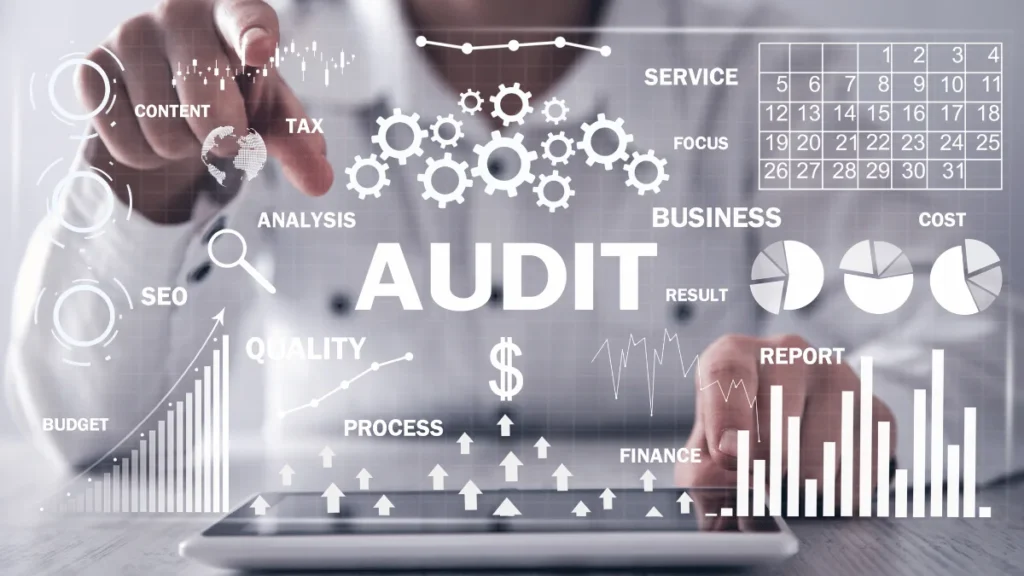Factory audits used to be a box to check—an annual ritual to meet legal or regulatory demands. But in today’s supply chain environment, driven by global uncertainty, heightened customer expectations, and ESG accountability, the stakes have shifted.
Audits are no longer just about ensuring compliance; they’re fast becoming tools for predicting supplier longevity, resilience, and alignment with your strategic goals. If you want to go beyond surface-level inspections, QCADVISOR factory audit services are designed to uncover the operational realities that truly impact supplier performance.
This article explores how factory audits are evolving from a compliance exercise into a performance-driven discipline. It’s a shift that doesn’t just protect your brand but empowers you to build smarter, more sustainable supplier relationships.
What is a factory audit and why is it essential for modern supply chains?
A factory audit is a systematic evaluation of a supplier’s manufacturing capabilities, quality control processes, social practices, and environmental impact. Unlike product inspections, which focus on verifying a specific order or shipment, factory audits assess the entire facility and its operational infrastructure.
As global sourcing expands, factory audits have become essential for mitigating risk, ensuring ethical practices, and meeting rising ESG (Environmental, Social, and Governance) standards. They offer early insights into how well a supplier can deliver consistently under pressure, scale operations, and adapt to evolving regulatory landscapes.
In essence, factory audits serve as a predictive tool—assessing not just current capabilities, but future potential. For businesses that rely on long-term supplier partnerships, this proactive approach is invaluable.
How do factory audits go beyond compliance?
Traditional compliance audits confirm whether a supplier is meeting the bare minimum: legal labor practices, basic safety standards, and documentation requirements. While necessary, these audits don’t reveal the full picture.
Performance-based audits dive deeper. They evaluate operational excellence, innovation capacity, and leadership quality—factors that strongly influence long-term supplier reliability. Instead of asking, “Are you compliant?” the question becomes, “Are you capable, responsive, and continuously improving?”
Common key performance indicators assessed include:
- Production capabilities and scalability
- Quality management systems (QMS)
- Employee training and retention
- Maintenance procedures
- Energy efficiency and sustainability practices
- Traceability and documentation protocols
By focusing on these areas, buyers gain insight into how well a supplier can support evolving production goals, maintain product consistency, and respond to change.
What are the main types of factory audits and when should each be used?

Each type of factory audit addresses different risk factors and operational objectives. Choosing the right one depends on industry demands, sourcing region, and supplier criticality.
Quality Audits
These focus on verifying quality systems and process control. Ideal for high-precision industries like electronics and automotive.
Pros: Standardized benchmarks (e.g., ISO 9001).
Cons: May miss social or environmental concerns.
Social Compliance Audits
Assess labor rights, working conditions, and ethical sourcing standards.
Pros: Critical for apparel, retail, and food supply chains.
Cons: Heavily reliant on documentation and interviews.
Environmental Audits
Evaluate energy use, waste management, emissions, and resource conservation.
Pros: Helps meet ESG and customer sustainability goals.
Cons: Can vary widely in scope and rigor.
Technical Capability Audits
Review manufacturing expertise, equipment condition, and process maturity.
Pros: Essential for onboarding strategic or high-volume suppliers.
Cons: Requires deep technical knowledge from auditors.
Security Audits (e.g. C-TPAT, ISO 28000)
Focus on logistics security, cargo protection, and risk of infiltration or theft.
Pros: Important for international trade compliance.
Cons: Often overlooked unless the customs risk is high.
Custom Audits
Tailored to industry-specific standards or buyer requirements.
Pros: Flexible and aligned with company priorities.
Cons: More resource-intensive to design and execute.
What does a factory audit process typically include?
While the specifics can vary, most audits follow a standardized flow that ensures depth and consistency. Key steps include:
- Pre-audit planning and documentation review
- On-site facility walkthrough
- Interviews with staff and management
- Sampling and product verification
- System and document checks
- Post-audit reporting
- Corrective action plan (CAP) implementation
Each stage is designed to paint a comprehensive picture of factory operations, culture, and control. Scope may be narrowed or expanded depending on whether the audit is initial, follow-up, or triggered by a quality issue.
How can audits identify long-term supplier risks?
Audits often uncover what daily production reports don’t—subtle indicators of instability or risk that can threaten future delivery performance.
They expose early warning signs of disorganization, skill gaps, or lack of commitment to improvement. Over time, these can snowball into missed deadlines, product recalls, or reputation damage.
Common red flags include:
- High worker turnover
- Inconsistent batch records
- Undocumented process deviations
- Inadequate CAP response history
- Use of subcontractors without client approval
Uncovering these risks early allows buyers to intervene before problems escalate—or to reevaluate the supplier relationship entirely.
What supplier performance metrics can be tracked through audits?
One of the most valuable outcomes of a factory audit is the ability to track supplier performance through quantifiable, time-based metrics. These allow for benchmarking, trend analysis, and goal setting.
Examples of audit-driven KPIs include:
- On-time delivery rate
- First pass yield (FPY)
- Defect rate over time
- Compliance rate with corrective actions
- Response time to process deviations
- Resource utilization and downtime tracking
When these metrics are monitored over multiple audits, they reveal whether a supplier is stagnant or evolving—and how that trajectory aligns with your expectations.
How do top-performing companies use audits as a supplier development tool?
Leading organizations treat audits not as a gatekeeping tool, but as a collaborative framework. They share findings with suppliers, work jointly on corrective actions, and use audit data to set improvement goals.
Take the case of a medical device manufacturer onboarding a Tier 1 plastics supplier. Instead of rejecting the supplier for initial non-conformities, the buyer initiated a phased development program. Through quarterly technical audits, shared process controls, and continuous feedback, the supplier not only improved but eventually exceeded the buyer’s internal standards.
This proactive approach builds supplier loyalty, encourages innovation, and reduces the total cost of quality.
What are common audit mistakes that limit long-term impact?

Even well-intentioned audits can fail if they focus too narrowly or overlook the human and operational context. Many audits lose effectiveness because they remain static and compliance-bound.
Critical mistakes include:
- Focusing only on checklists
- Not contextualizing findings
- No follow-up on CAP
- Not involving the supplier in solutions
- Ignoring soft skills or management quality
- Infrequent or inconsistent audit schedules
These missteps can undermine the credibility of the audit process and erode supplier trust, limiting any chance of long-term performance improvement.
What tools and frameworks support audit-driven supplier improvement?
To make audits scalable and impactful, companies often rely on global standards and digital platforms that structure and streamline the process. These frameworks ensure alignment with industry best practices and provide shared language between buyers and suppliers.
Key tools and frameworks include:
- ISO 9001 (Quality Management)
- SA8000 (Social Responsibility)
- Sedex & SMETA (Ethical Trade)
- IATF 16949 (Automotive Quality)
- ETI Base Code (Labor Standards)
- Digital audit platforms like QIMA, SGS, and Verisio
These resources help standardize expectations while enabling real-time tracking and scoring across suppliers.
When should you audit a supplier—and how often?
Audit timing should be guided by risk, volume, and strategic importance. One-time audits are common during supplier onboarding, but ongoing audits are necessary for long-term oversight.
High-risk or critical suppliers may warrant biannual or even quarterly reviews, while lower-risk vendors might be audited once every 12–18 months. A rolling audit program ensures that no blind spots develop over time.
It’s also crucial to distinguish between pre-qualification audits (before engaging) and post-engagement audits (to maintain performance).
How do audit findings translate into supplier scorecards?
Audit results provide the raw data that feed supplier scorecards—tools that turn findings into structured evaluations.
Common scorecard categories include:
- Quality
- Delivery
- Cost competitiveness
- Innovation
- Sustainability
- Communication and responsiveness
Each category can be weighted according to the buyer’s priorities. Over time, scorecards help track supplier maturity and inform sourcing decisions like contract renewals or preferred vendor status.
How should buyers prepare for a meaningful factory audit?
To maximize audit value, buyers need to approach the process with clarity and collaboration. Preparation is as important as execution.
Best practices include:
- Define audit goals clearly
- Share expectations with auditors
- Align audit scope with long-term priorities
- Include multi-disciplinary stakeholders (quality, engineering, compliance)
- Pre-check for language or cultural gaps
- Schedule audits during peak and off-peak times if possible
Well-prepared buyers foster more accurate, actionable, and transparent audits.
How can suppliers prepare for a factory audit to demonstrate performance?
Suppliers who see audits as a growth opportunity—not a threat—tend to perform better and earn longer-term partnerships.
Key preparation steps include:
- Maintain updated and accessible documentation
- Train frontline staff for transparency
- Conduct internal mock audits
- Track and display improvement metrics
- Designate an internal audit liaison
- Address previous audit findings proactively
This readiness signals maturity, commitment, and a culture of continuous improvement.
What industries rely most on audit-driven supplier performance?
Several high-risk and high-compliance sectors make audits a core part of sourcing:
- Aerospace (precision and documentation)
- Automotive (IATF compliance)
- Electronics (component traceability)
- Apparel (labor and ESG risks)
- Food & Beverage (HACCP, safety compliance)
- Medical Devices (ISO 13485)
- Consumer Goods (brand protection)
In these industries, a failed audit isn’t just a red flag—it can mean the end of a contract.
What are some alternatives to traditional third-party audits?
When traditional audits aren’t feasible, alternative models may offer partial visibility. These include:
- Second-party audits: Conducted by the buyer directly.
- Remote audits: Use video walkthroughs and digital document sharing.
- Supplier self-assessments: Internal evaluations submitted for review.
While faster and cheaper, these methods may lack objectivity. They’re best used as supplements—not replacements—for third-party audits when full transparency is essential.
How do factory audits tie into broader supplier relationship management?
Factory audits don’t exist in a vacuum—they feed directly into broader SRM strategies. Their insights shape contract terms, performance reviews, and even R&D collaborations.
Strategic suppliers often undergo deeper, more frequent audits. Their audit history may determine eligibility for tiered programs or long-term development plans. When embedded into SRM, audits become a living tool, not a static record.
What are the future trends shaping supplier audits in 2025 and beyond?
Supplier audits are undergoing a digital transformation. What was once clipboard-and-checklist is becoming data-driven and continuous.
Emerging trends include:
- Continuous audit via IoT and MES
- Remote audit platforms with live video walkthroughs
- Cross-functional audit scoring models
- Carbon footprint and circularity audits
- Ethical sourcing certifications gaining weight
These shifts aim to make audits faster, more transparent, and aligned with sustainability goals.
Conclusion
Factory audits have evolved from passive checklists into active levers of supplier performance. When used wisely, they reveal more than compliance—they uncover potential, prevent disruption, and build resilient partnerships.
In a world where supplier reliability is strategic, audits are no longer about catching what’s wrong—they’re about developing what’s right.
Harry O’Neill writes about all things tech, SaaS, and marketing at Solution Suggest. He’s known for turning complex ideas into clear, actionable insights. With experience working alongside top-tier companies worldwide, he helps brands connect with their audiences through content that drives real results.
